Several of my sources mentioned Website Grader yesterday. It's an easy-to-use tool for evaluating blogs and websites for search engine friendliness, and it gave me a few helpful suggestions. It also pointed out something that I knew: this blog is not dumbed down. Fair enough, since I've been wondering about the role of calculus in social media measurement. Specifically, what can we learn by taking derivatives of the metrics in social media?
Sorry, this is going to be long. There will be math, but no numbers, and for the pedantic, I'm going to be a bit loose with some definitions.
On readability
One of the things that Website Grader does is evaluate the readability level of a site. A lower level means that a larger population will be able to read it, which is generally a good thing. My company site scored an 8th grade readability level, so any potential clients who dropped out of high school should be able to read it.
 The blogs showed a somewhat higher reading level. I guess that's what I get for talking with people who do data mining, machine learning and natural language processing for a living. That jargon probably explains most of the "advanced degree" rating—I don't think my writing is that opaque, although I do have a vocabulary and like to use it.
The blogs showed a somewhat higher reading level. I guess that's what I get for talking with people who do data mining, machine learning and natural language processing for a living. That jargon probably explains most of the "advanced degree" rating—I don't think my writing is that opaque, although I do have a vocabulary and like to use it.
Since you're all apparently capable of reading at an advanced level, let's talk about some math. Not at a PhD level, though. It's just a little first-semester calculus, and to further spare the pain, we won't deal with any numbers, just the ideas.
Bring on the math
Social media metrics have been the topic of a lot of discussion lately. It's on the agenda at the IPR Summit on Measurement today, to take the latest example. But instead of taking another swipe at what to measure, let's think about what you can do with the metrics you do collect, beyond sorting and charting them. Remember derivatives?
The first derivative
If you recall, the first derivative is the rate of change—velocity. Any report that includes the change of a metric since the last period is reporting velocity, but have you considered looking at velocity over time? Do you have top movers lists to go with your top 5 lists? Do you have a view into how long a trend has been growing?
The interpretation of velocity is straightforward. It provides trend information on how much a metric is changing, so it's useful for identifying areas with the biggest change. By extension, it can be a leading indicator for items that will move to the highest/lowest values, such as a top topics list. Here are a few ideas for applying change measurement:
- Topics: Top-moving trends, growth history of emerging trends
- Sentiment: Improvement/worsening trend, change of contribution of topics/sources to overall sentiment
- Influence: Growth/decline trend of a source's influence, shift of a source's focus
The usefulness of the first derivative shows up in Market Sentinel's follow-up
analysis of Dell. The sentiment scores are still negative, but some of the trends are positive. From an internal reporting perspective, it would be nice to be able to report positive trends with negative scores, especially if that combination persists.
The second derivative
The second derivative is the rate of change of the rate of change—acceleration. While velocity can be visually apparent from the slope of a graph, acceleration is harder to see. Its application is less obvious, too, but it's a leading indicator of changing directions in trends. Acceleration will show the slowing of a top trend before it starts to drop, or the beginning of a turnaround in a negative score. It will also show if a trend is snowballing, if both velocity and acceleration are either positive or negative.
If you're measuring continually—daily or more often, for example—large acceleration values can trigger alerts. A fast-growing (1st derivative) trend with a large, positive accceleration is something you want to understand quickly. Negative-trending sentiment with negative acceleration indicate a problem that is getting worse.
First + second = Priority
Just as velocity is a leading indicator for absolute values, acceleration is a leading indicator for velocity (assuuming that your metrics don't bounce around willy-nilly). Put them together, and they show where things are going. If both are positive or negative, a trend is accelerating—great if it's positive, potentially a crisis if it's negative. When one is positive and the other is negative, things are beginning to change, and acceleration shows the direction. You don't want to get too twitchy in responding to changes in acceleration, but big changes may be trying to tell you something.
Regardless of your choice of metrics, are you doing the (simple) math to evaluate trends over time? What other uses have you found?
Tags: social media analysis measurement metrics

 For the first time in my life, I was addressed as "Nathan-san" this week, after
For the first time in my life, I was addressed as "Nathan-san" this week, after 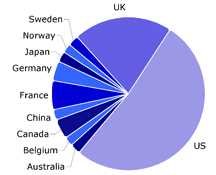 In the process of developing the
In the process of developing the 


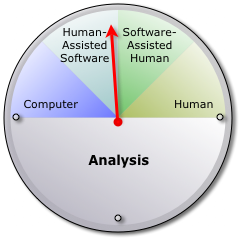 Software-assisted human analysis
Software-assisted human analysis


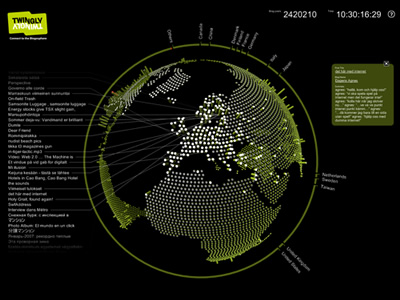 This is a visualization of
This is a visualization of 
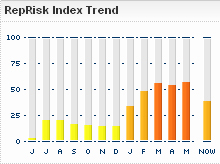
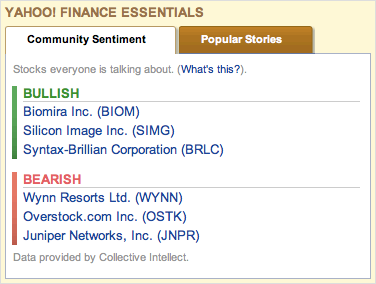

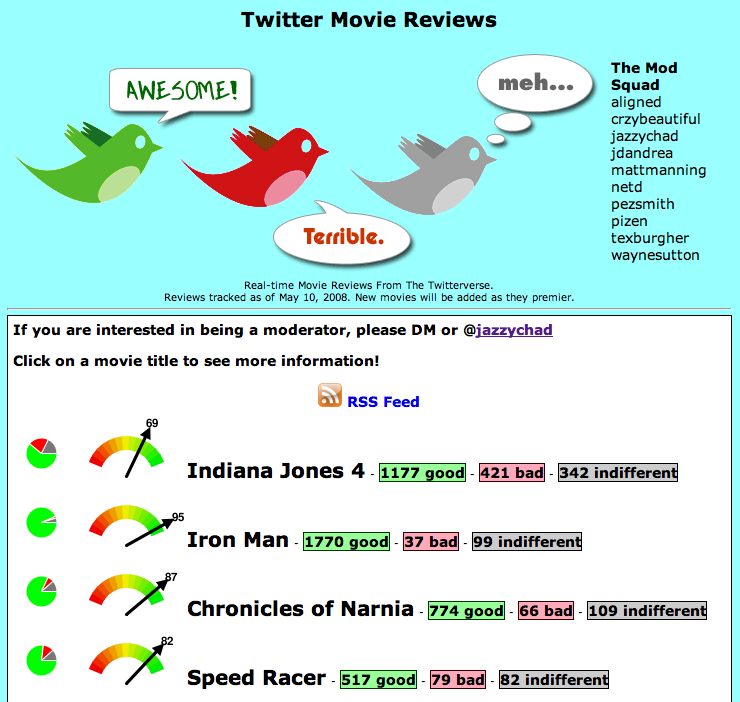
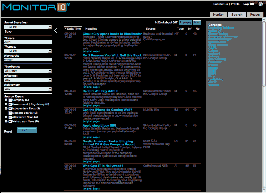 Some blog comments (discussion on
Some blog comments (discussion on  I first heard the idea of categorizing people as information producers and information consumers in a briefing with
I first heard the idea of categorizing people as information producers and information consumers in a briefing with  I've said that opposing viewpoints over
I've said that opposing viewpoints over 

